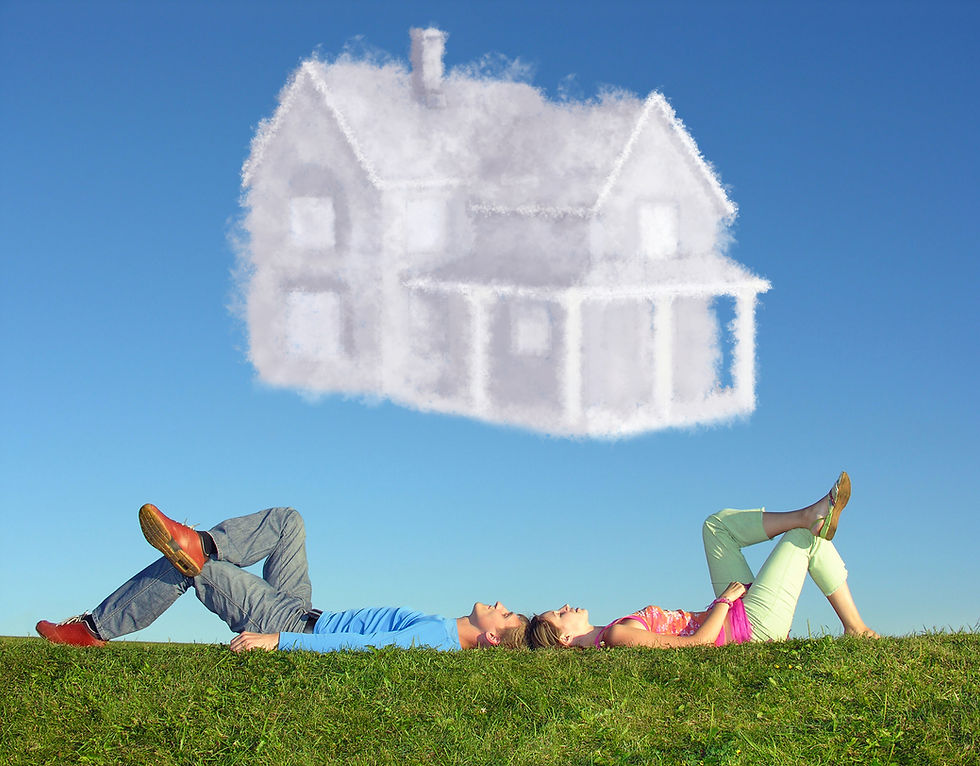Breathe Easier: 12 Ways to Allergy-Proof Your Home
- Marni Jameson

- Jul 10, 2023
- 4 min read

Achoo! Sniff. Wheeze. Pass the tissues, please.
Just as the beautiful warm weather starts to lure us outside to take a nap in the hammock, seasonal pollen drives many of us right back indoors.
More than one in four Americans suffer from seasonal allergies, or hay fever, according to the Asthma and Allergy Foundation of America. If you’re one of them, you know what I’m talking about. You know firsthand that taking in the great outdoors can make your eyes water, your throat itch, your nose run, and your pockets and waste baskets fill with soggy wads of tissue.
Right now, most parts of the country are in the thick of it. Though pollen seasons vary depending on where you live, the cycle goes roughly like this: Spring through early summer tree pollen peaks. As that dies down, grass pollen kicks up through summer, followed by weed pollen in the fall. So much for those summer picnics.
However, while escaping the air seems impossible, you can make your home a haven from allergens by practicing some basic house hygiene, according to the allergy foundation.
“It takes effort,” said Dr. Cliff Han, biologist and founder of AllerPops, a New-Mexico-based company that makes a line of allergy-relief products. “By keeping the air in your home clean, the dust at bay, and your bedding washed, you can significantly reduce your symptoms and make allergy season more bearable."
Allergies happen when our immune system, which is designed to fight what does not belong to us, sees a substance as harmful and overreacts, said Han, who suffers from seasonal allergies himself.
The best way to keep this from happening is to avoid or limit your exposure to what triggers your allergies. The three most common allergens that we can combat at home are pollen, dust, and mold.
“We know what triggers airborne allergies,” he said. “If you don’t have those triggers around, you get better.” Here are 12 household recommendations from Han and the allergy foundation that can help make those who suffer from seasonal allergies breathe easier at home:
1. Clear the air. During pollen season, do what you can to keep pollen from coming indoors. Keep doors and windows closed. Run the air conditioner and invest in an air purification system that has a HEPA (for high-efficiency particulate air) filter.
2. Shake it off. When you do go out, wear a light removable outer layer of clothing and a hat or head scarf to keep pollen off your skin and hair. When you come in, remove the outer layer and drop it in a hamper. Leave your hat and shoes at the door.
3. Wash up. Once inside, wash your face, nose, and hands. “When exposed to water, pollen will stop traveling,” Han said. Nasal rinses help remove pollen from your nose. Nasal sprays are also helpful.
4. Firm up floors and furniture. If possible, opt for hard flooring, such as wood or tile, as opposed to carpet. If you have carpet, a low pile is better than a high pile. Once a week, damp mop hard floors and vacuum carpets with a vacuum that has a HEPA filter. Washable area rugs at doorways are also a good line of defense. Similarly, leather, wood, vinyl, and plastic furnishings will trap less pollen and dust and are easier to clean than fabric furniture, which can harbor dust mites (microscopic critters found in almost every home). Regular vacuuming of fabric furniture will also help.
5. Wash bedding at least weekly. Dust mites love to nest in beds. Keep them out by wrapping pillows and mattresses in dust-mite-proof covers. Wash sheets and blankets weekly in water that’s at least 130 degrees Fahrenheit. Wash pillows and comforters often as well. Experts also recommend showering before bed.
6. Clean filters. Clean air conditioning ducts often and change filters monthly during high pollen seasons. If you’re prone to allergies, have someone else do this job, or wear a mask and gloves.
7. Clean rooms from top to bottom. When dusting, start at the top and work down, so you don’t knock dust onto freshly cleaned surfaces. Instead of pushing dust around with a feather duster, use a microfiber cloth to absorb dust, mold particles and pollen.
8. Practice pet control. Although those who have severe pet allergies do better in pet-free homes, if you do have pets try to keep them from bringing home pollen. Bathe them often. When they come in from outside, wipe their feet and their fur with a damp towel. Don’t let them get on beds or sofas.
9. Mind the mold. Mold thrives in moist environments. Keep it at bay by fixing water leaks promptly, running the fan when showering, and by keeping showers, shower curtains, tubs, and toilets super clean and sanitary. Also limit yourself to a few houseplants, which are prone to develop mold.
10. Cut the clutter. Anything that traps dust can trip allergies. Keep the dust-collecting bric-a-brac to a minimum; opt for fewer, large, easy-to-polish accessories instead. Store children's toys and stuffed animals in plastic bins.
11. Avoid wood-burning fireplaces. Wood and tobacco smoke can worsen respiratory allergies. Natural gas fireplaces won't cause this problem.
12. Keep cool. Hot humid houses are breeding grounds for dust mites and mold. Use the air conditioner to keep your house cool and humidity down. Here’s hoping you breathe a little easier this summer.
CAPTION: Pollen Prevention — Vacuuming often, running the air conditioner, and keeping doors and windows closed are key ways, experts say, hay fever sufferers can reduce symptoms at home. Photo courtesy of Chernetskaya for Dreamstime.




Comments